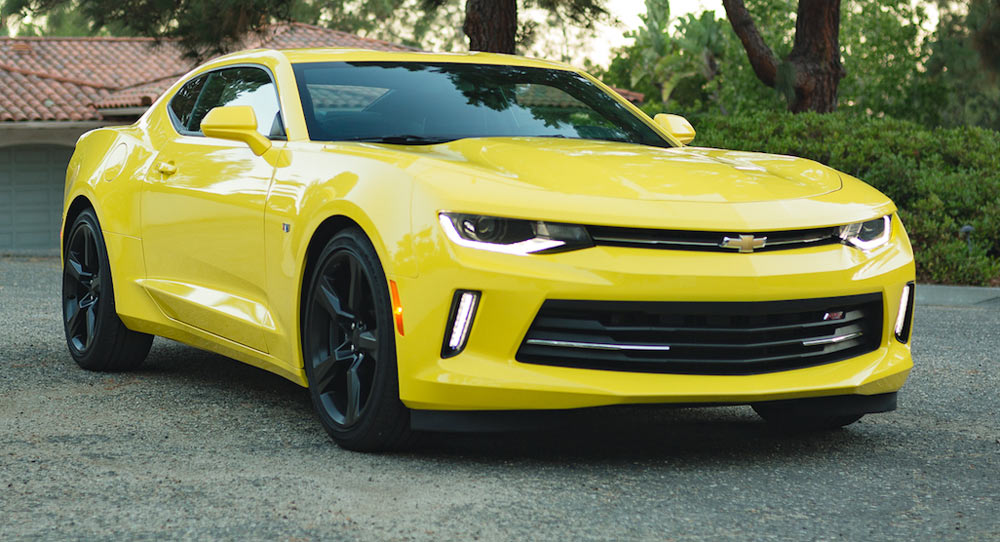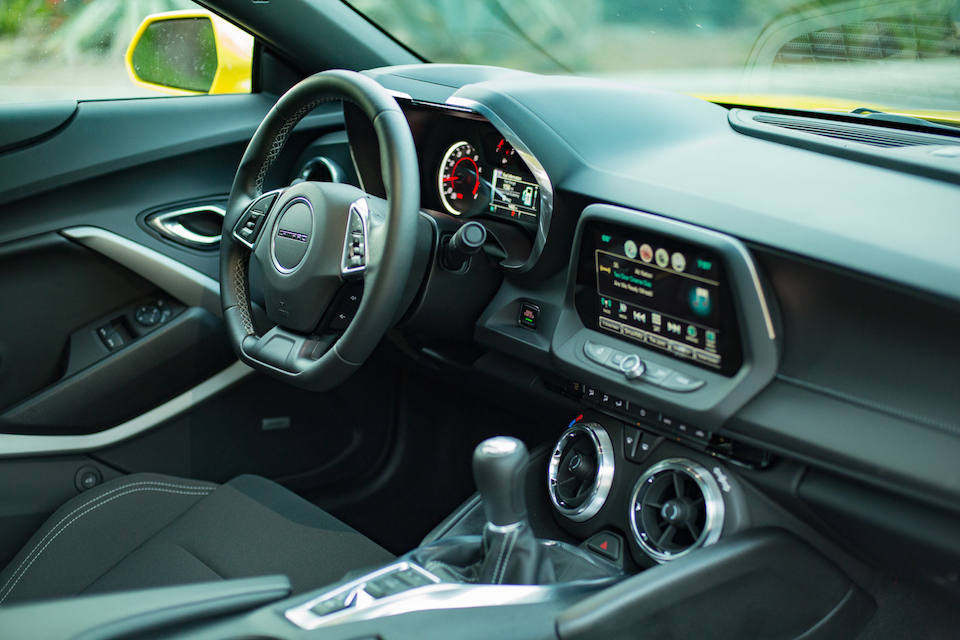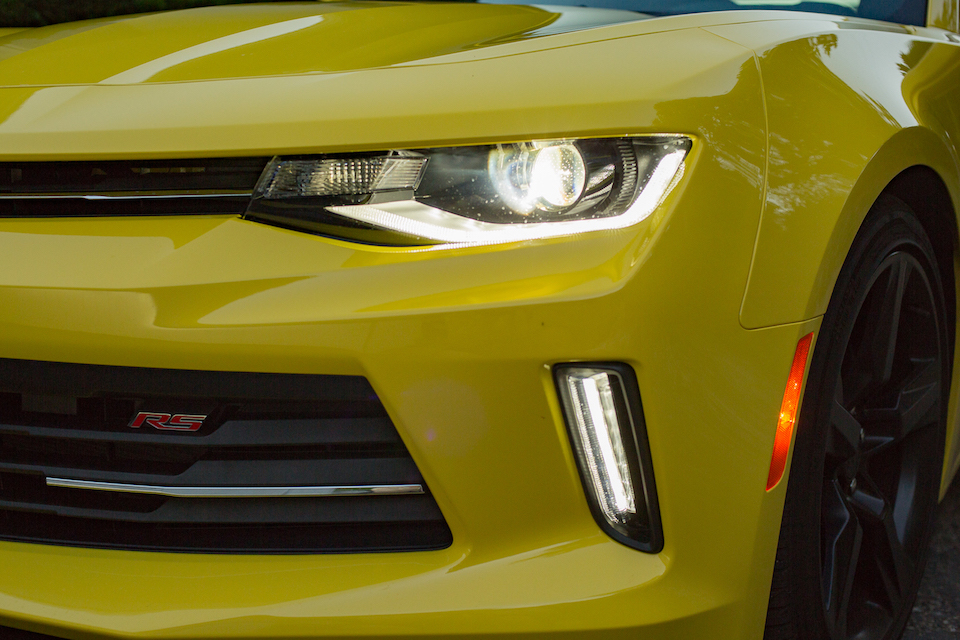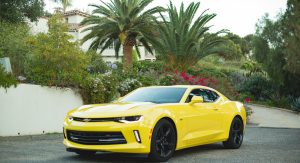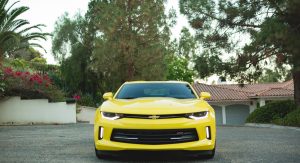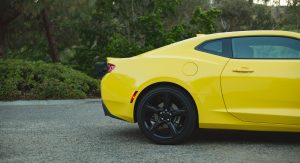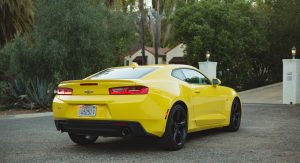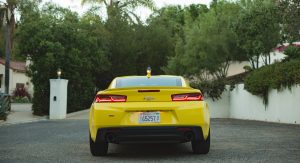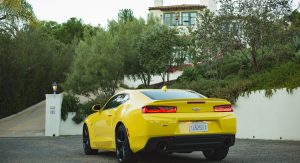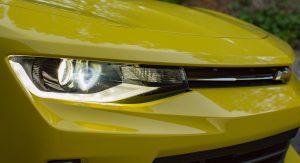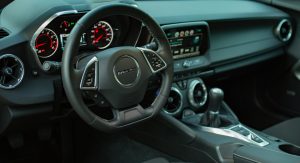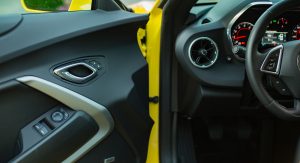Amid rising fuel economy standards and slowing car sales, what is the future of the pony car? The answer may already be here, with this 2016 Chevrolet Camaro, a car not always associated with efficiency and modernity.
But the Camaro has adapted to a new world that isn’t as horsepower and displacement-obsessed, although with more success than when it tried to do that during the last energy crisis. Because along with the adoption of a turbocharged 2.0 -liter four-cylinder, the Camaro drives differently, like it’s discovered manners can coexist with a brash exterior.
And suddenly it’s the pony car for the rest of us. Is that enough to save the category?

Don’t change all at once
What isn’t helping Camaro sales at the moment is that it’s pretty hard to distinguish the new one against the old one without parking them side by side. And that’s a shame because the new Camaro looks like the old one went on Weight Watchers.
Partly because it did, and the big weight savings and trimmer dimensions over last year’s car pays dividends in more than just looks. Skip the Bumble Bee-baiting paint and the Camaro cuts a surprisingly sophisticated profile. Upsized wheels are required to fill out the wheel arches, but doing that makes the Camaro look like an up-to-date sports car, rather than a ’70s throwback, something you could probably accuse the Ford Mustang of and certainly the Dodge Challenger.
My test Camaro was a lightly optioned 1LT model, so this is pretty much what the base Camaro interior looks like. And it’s not a bad place to be if you don’t care much about seeing out of your car.
You sit low and the roof is low, but the windows seem like they’re way above you. Raise the seat up a bit if you’re shorter and you’ll run out of headroom in a hurry. And the sometimes-finicky clutch may also dictate how you sit. It’s an odd sensation.
Given time, however, it’s possible to find a comfortable driving position. The seats themselves are reasonably comfortable, wide enough to never feel as confining as the rest of the car.
Controls are pretty simple and the dash itself is dominated by the Chevy MyLink touchscreen that’s part of an option package on this base model. After having three different infotainment systems in three different Chevrolet models I drove recently, it’s the best the company currently offers.
Criticisms, apart from visibility, are relatively minor. The basic fabric on the seats feels pretty low-rent and the minimalist dash means you get a huge slab of black plastic to look at. The condensed climate controls are a good use of what little space there is on that shallow dash, but they never came readily to hand after a week of driving.
Oh, and the rear seat is still a joke. However, there is enough space to reach back there to fold the seat down to make the decently sized trunk even more usable. Practicality is discovering the Camaro.
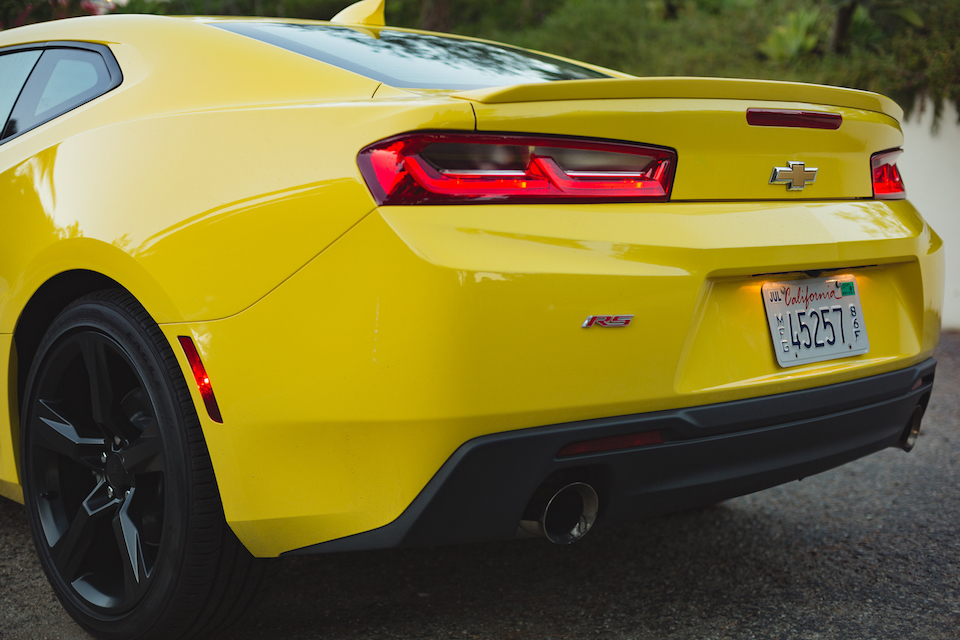
The Camaro that studied abroad
Those nasty sightlines make the Camaro harder to drive than it should be. Nearly every turn or reversing maneuver requires a quick prayer before attempting. But things improve immensely if you’re not worried about navigating city streets.
Basing a Camaro off of mechanicals also used by two Cadillac sedans was a good move towards making grown-up pony car. While it feels pretty wide, the Camaro is at least predictable and relatively light on its feet, demonstrating more athleticism than the last version or any other pony car on sale. There’s a certain Teutonic flavor to the way it drives that’s unexpected, in a good way.
If you believe a Camaro needs a V8 to be taken seriously, then you can stop reading here. But this 2.0-liter turbocharged four-cylinder is no slouch. And it’s the engine to get if you’re going to drive a Camaro every day. Also shared with the Cadillacs, it makes a healthy for its size 275 horsepower.
Off the line, though, it doesn’t feel like all of those horses showed up for work, probably because the 295 lb-ft of torque don’t really show up to work until around 3,000 rpm, late for a modern turbo. But it’s a sweet pairing for the Camaro once it’s all there. Power is strong in third and fourth gears, giving midrange grunt unlike any V6 that’s ever been in a Camaro.
Chevy points out that the four-pot turbo is more powerful than any V8 offered in the Camaro until 1996. Whether that lifts your impression of the turbo or reminds how long emission controls hobbled V8s is up for debate.
The six-speed manual’s shift action is surprisingly high effort and first-to-second took some practice to make smooth, an issue I also had with the Chevy SS. But the turbo’s flexibility made shifting less necessary than it would be in the V6 Camaro. The optional eight-speed automatic may be the more refined choice, but I struggle to think it’s worth the extra cost. And it’s not like the turbo Camaro is exactly thrilling to drive, even with the manual. Toggle through the modes and you get some sound reminiscent of a burbling V8, but there’s more turbo whoosh than anything else. There’s no V8 rubble, only a turbo four throbbing that feels old-school Volvo.
But that’s the everyday appeal of the turbocharged Camaro. It’s remarkably hot hatch-ish in its personality and ease of use. And I can get behind that.
You’re getting quite a lot of car for $30,000 here, and a color and wheel change would drop it lower than that. Consider the 2.0T makes more torque than the V6 and gets reasonably good fuel economy on a long run, this is a practical proposition in spite of packaging concessions.
But the biggest news is that the most basic Camaro is probably the best one. That’s not really consolation to those who crave displacement, and the turbocharged version does carry a noticeably different personality. But consider how many years this American icon was saddled with engines from Citations and Luminas and the 2016 Camaro 2.0T feels Space Age by comparison.
A Camaro is still a styling statement, but no one has to know a wave of sanity came over you just before you signed on the line for the V8.
Photos: Keith Moore/Carscoops



